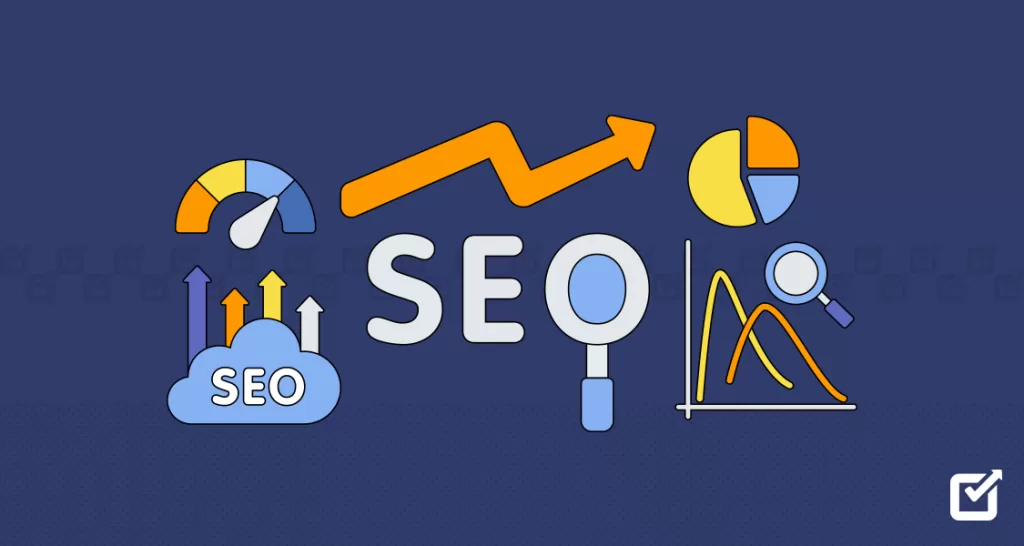Proven SEO Best Practices to Drive More Traffic and Boost Sales in 2025
In today’s competitive digital landscape, simply having a website isn’t enough you need a well-optimized site that ranks high on search engines to attract traffic and generate sales. Search Engine Optimization (SEO) is the key to ensuring your site gets found by the right audience. However, SEO is constantly evolving, and what worked a year ago may not be as effective today.
In this guide, we’ll walk you through the most effective SEO best practices to increase traffic and maximize conversions. Whether you’re a business owner, marketer, or blogger, these strategies will help ensure your website stays ahead of the competition.

Conduct In-Depth Keyword Research
Keywords are the foundation of SEO. Without proper keyword research, your content may not reach your target audience. To do this effectively, focus on long-tail keywords that are more specific and less competitive. For example, instead of “running shoes,” target “best running shoes for marathon training.” Utilize keyword research tools such as Google Keyword Planner, Ahrefs, Semrush, and Ubersuggest to identify high-volume, low-competition keywords.

Analyze competitors to see which keywords they are ranking for and find gaps in your own strategy. Also, prioritize user intent by ensuring your content aligns with what users are searching for, whether it’s informational, navigational, or transactional queries. Regularly updating your keyword strategy will keep your content relevant and competitive in search rankings.
Optimize Your On-Page SEO
On-page SEO involves optimizing individual web pages to rank higher and earn more relevant traffic. Craft compelling title tags and meta descriptions that include target keywords. A well-crafted title tag should be under 60 characters, while meta descriptions should be around 150-160 characters.
Use header tags (H1, H2, H3, etc.) to structure your content for better readability and SEO. Internal linking keeps users engaged and improves crawlability. Optimizing images by using descriptive alt text and compressing them helps enhance page speed. Keeping URLs short, descriptive, and keyword-rich also improves search engine visibility. Additionally, enhancing content readability with bullet points, short paragraphs, and subheadings makes it more scannable for users.
Create High-Quality, Engaging Content
Content remains one of the most important factors in SEO success. Focus on writing for humans first, providing valuable and relevant information rather than keyword stuffing. A conversational tone makes content more engaging and easier to read. Including visuals such as images, videos, infographics, and charts enhances user experience.

Answer common questions that your audience is searching for by using Google’s “People Also Ask” section for inspiration. Regularly update older content to maintain its relevance, ensuring it remains useful and up-to-date. Developing a content calendar helps maintain consistency in publishing, and incorporating video content can increase dwell time, which contributes to higher rankings.
Improve Your Website’s Technical SEO
Technical SEO ensures that search engines can effectively crawl and index your site. Improve page speed by using tools like Google PageSpeed Insights to identify and fix slow-loading elements. Ensure your website is mobile-friendly, as mobile-first indexing prioritizes sites optimized for mobile devices.
Fix broken links that can hurt user experience and SEO. Using schema markup helps search engines better understand your content, leading to improved rich snippets. Secure your site with HTTPS by installing an SSL certificate. Creating an XML sitemap and submitting it to Google Search Console improves indexing. Optimizing Core Web Vitals, including Largest Contentful Paint (LCP) and First Input Delay (FID), enhances overall user experience and ranking potential.
Optimize for Local SEO
If you run a local business, optimizing for local SEO is crucial for attracting nearby customers. Claiming and optimizing your Google Business Profile with accurate information, high-quality images, and positive customer reviews can improve your local search presence.
Using local keywords such as “best coffee shop in New York” helps target location-based searches. Getting local citations by listing your business on directories like Yelp and TripAdvisor increases credibility. Encouraging satisfied customers to leave reviews can improve your rankings. Optimizing for “near me” searches and creating location-specific landing pages for different service areas further enhances visibility.
Build High-Quality Backlinks
Backlinks are one of Google’s top ranking factors. To build high-quality backlinks, focus on guest blogging for reputable websites within your industry. Creating linkable assets, such as ultimate guides, case studies, and research reports, increases the likelihood of earning backlinks.
Reach out to bloggers, journalists, and industry influencers to share your content. Identifying broken backlinks on other sites and suggesting your content as a replacement can also be an effective strategy. Platforms like HARO (Help a Reporter Out) provide opportunities to gain authoritative backlinks by offering expert quotes for media outlets. Collaborating with influencers can also generate valuable referral traffic and backlinks.
Leverage AI and Automation for SEO
AI is revolutionizing SEO, offering powerful tools to streamline optimization efforts. AI-powered content creation tools like Jasper and Copy.ai assist in generating SEO-optimized content quickly. Automated keyword tracking platforms like Semrush and Ahrefs provide real-time ranking insights.
AI-based chatbots enhance user engagement by providing instant assistance, while predictive analytics help analyze user behavior and optimize content strategies accordingly. AI-driven content optimization tools analyze readability, keyword density, and SEO-friendliness before publishing, ensuring your content is highly optimized for search engines.
Track and Analyze SEO Performance
SEO is an ongoing process that requires constant monitoring and adjustments. Use tools like Google Analytics to measure traffic, user behavior, and conversion rates. Google Search Console helps track search performance and identify indexing issues.
Heatmap tools such as Hotjar provide insights into user interactions, helping improve website design and functionality. An SEO dashboard can track keyword rankings, traffic sources, and backlink profiles. Running A/B tests on headlines, page layouts, and calls-to-action can provide valuable insights into improving website performance and user engagement.
Related Article: 8 Best SEO Audit Tools to Boost Performance (Free & Paid)
SEO is not a one-time task it requires consistent effort and adaptation to the latest trends. By following these best practices, you can significantly improve your website’s search engine rankings, increase traffic, and drive more sales. Staying updated with emerging SEO strategies and leveraging AI-driven tools will keep your site ahead of the competition.


One Response